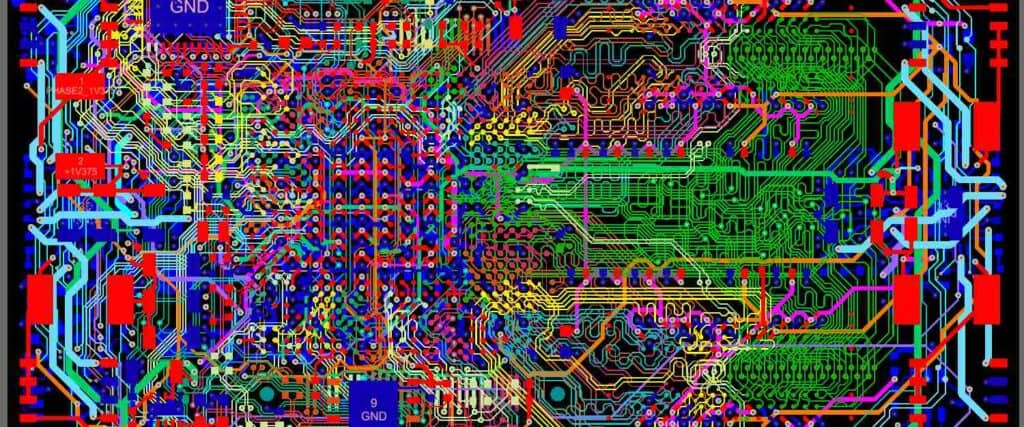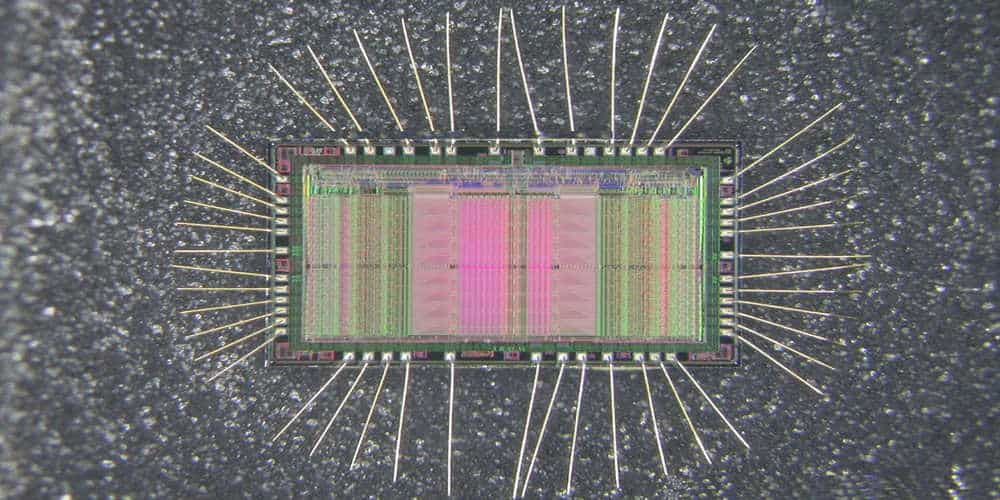BGA circuit boards are becoming increasingly popular in the electronics industry due to their compact size and high performance. BGA, or ball grid array, is a type of surface-mount technology that involves soldering tiny balls of metal to the surface of a printed circuit board. The balls are then connected to the internal components of the board, creating a more efficient and reliable connection.
Designing a BGA circuit board can be a complex process that requires careful planning and attention to detail. Factors such as the number and placement of the balls, the size and shape of the board, and the overall layout of the components must all be taken into consideration. Despite the challenges, BGA circuit boards offer many advantages over traditional through-hole technology, including increased speed, reduced size, and improved thermal performance.

Overview
What is BGA Circuit Board Design?
BGA stands for Ball Grid Array, which is a type of surface mount technology used in integrated circuits. A BGA package consists of a silicon die attached to a substrate, which is then mounted onto a printed circuit board (PCB). The contacts between the package and the PCB are made through a grid of solder balls on the bottom of the package. BGA circuit board design refers to the process of designing PCBs that incorporate BGA packages.
Why is BGA Circuit Board Design Important?
BGA circuit board design is important for several reasons. First, BGA packages have a higher pin density than other types of packages, which means that they can be used to create smaller and more compact circuit boards. This is particularly important in applications where space is limited, such as in portable electronic devices.
Second, BGA packages are more reliable than other types of packages because they have a larger number of solder connections. This means that they are less likely to fail due to thermal cycling or mechanical stress.
Finally, BGA packages are easier to manufacture than other types of packages because they can be mounted using automated equipment. This means that they can be produced more quickly and at a lower cost than other types of packages.
In conclusion, BGA circuit board design is an important process for creating small, reliable, and cost-effective PCBs.
Design Process
The design process for BGA circuit boards involves several stages, including schematic design, layout design, routing, and verification.
Schematic Design
The first step in the design process is schematic design. This involves creating a diagram that shows the electrical connections between the components of the circuit. The schematic should be clear and easy to read, with each component labeled and connected to the appropriate pins.
Layout Design
Once the schematic is complete, the next step is layout design. This involves placing the components on the circuit board and arranging them in a way that minimizes the length of the traces and reduces the risk of interference between components. The layout should also take into account the size and shape of the circuit board, as well as any mounting requirements.
Routing
After the components have been placed on the circuit board, the next step is routing. This involves creating the physical connections between the components using copper traces. The traces should be as short and direct as possible, and should be designed to minimize interference between components.
Verification
Once the routing is complete, the final step is verification. This involves checking the design for errors and ensuring that it meets the required specifications. Verification can be done using a variety of tools, including simulation software and physical testing.
Overall, the design process for BGA circuit boards requires careful planning and attention to detail. By following the steps outlined above, designers can create circuit boards that are reliable, efficient, and meet the needs of their intended application.
Considerations

Component Selection
When designing a BGA circuit board, it is essential to carefully select the components that will be used. The chosen components must be compatible with the board’s design and meet the required specifications. It is also important to consider the availability and cost of the components.
Thermal Management
BGA circuit boards generate a significant amount of heat, which can cause damage to the components and reduce the board’s performance. Therefore, thermal management is a critical consideration when designing a BGA circuit board. It is essential to ensure that the board has adequate heat dissipation mechanisms, such as heat sinks, thermal vias, and thermal pads.
Signal Integrity
BGA circuit boards are susceptible to signal integrity issues due to the high density of components and traces on the board. It is crucial to ensure that the signal traces are designed correctly to minimize crosstalk, noise, and signal loss. The use of impedance control, signal routing guidelines, and proper grounding techniques can help improve signal integrity.
Manufacturability
The manufacturability of a BGA circuit board is a critical consideration during the design phase. The board must be designed with the manufacturing process in mind to ensure that it can be produced efficiently and cost-effectively. It is essential to consider the board’s size, shape, and complexity, as well as the placement of components, routing, and soldering.
Overall, when designing a BGA circuit board, it is crucial to consider component selection, thermal management, signal integrity, and manufacturability to ensure that the board meets the required specifications and can be produced efficiently.
Tools and Software
CAD Tools
When it comes to designing BGA circuit boards, using Computer-Aided Design (CAD) software is essential. CAD tools help designers create schematics, layout designs, and 3D models of the board. Some popular CAD tools for BGA circuit board design include Altium Designer, Eagle PCB, and KiCad. These tools offer a range of features and capabilities, such as libraries of pre-built components, auto-routing, and design rule checks.
Simulation Software
Simulation software is used to test and validate the design of the BGA circuit board before it is manufactured. This software can simulate the behavior of the board under different conditions, such as temperature changes, voltage fluctuations, and signal interference. Popular simulation software includes LTSpice, PSpice, and Simulink.
Testing Equipment
After the BGA circuit board is manufactured, it is important to test it to ensure that it performs as expected. Testing equipment is used to check for defects, such as shorts, opens, and incorrect connections. Some common testing equipment includes multimeters, oscilloscopes, and logic analyzers. Automated testing equipment, such as Flying Probe testers and Automated Optical Inspection (AOI) machines, can also be used to speed up the testing process.
In conclusion, using the right tools and software is crucial for designing and testing BGA circuit boards. CAD tools, simulation software, and testing equipment are all important components of the design process and can help ensure that the final product is of high quality.
Best Practices

Design for Manufacturability
When designing a BGA circuit board, it is important to consider the manufacturing process from the very beginning. Here are some best practices to follow:
- Keep the design simple: Avoid complex shapes and patterns that may be difficult to manufacture.
- Use standard components: Standard components are readily available and can be easily sourced.
- Minimize the number of layers: Fewer layers mean lower manufacturing costs and fewer opportunities for errors.
- Follow the manufacturer’s specifications: Always follow the manufacturer’s recommendations for minimum trace widths, minimum clearances, and other design rules.
Design for Testability
Designing for testability is critical to ensuring that the board works as expected. Here are some best practices to follow:
- Include test points: Test points make it easy to access specific parts of the board during testing.
- Use built-in self-test (BIST) circuits: BIST circuits can help detect faults and ensure the board is working correctly.
- Use boundary scan: Boundary scan allows for non-invasive testing of the board and can help detect faults in the connections between components.
Design for Reliability
Designing for reliability is essential to ensuring that the board will function correctly over its lifetime. Here are some best practices to follow:
- Use high-quality components: High-quality components are less likely to fail and can improve the overall reliability of the board.
- Use thermal management techniques: Proper thermal management can help prevent overheating and extend the life of the board.
- Follow industry standards: Following industry standards can help ensure that the board is designed to meet the highest reliability standards.
By following these best practices for BGA circuit board design, you can ensure that your board is manufacturable, testable, and reliable.
Future Developments

As technology continues to advance, the field of BGA circuit board design is also evolving. Here are some of the future developments to look out for:
-
Increased use of 3D printing: 3D printing technology is becoming more accessible and affordable, which means that it will become more common in the production of BGA circuit boards. This technology can be used to create complex shapes and designs that would be difficult or impossible to achieve with traditional manufacturing methods.
-
Integration with IoT devices: As the Internet of Things (IoT) becomes more prevalent, BGA circuit boards will need to be designed to work seamlessly with these devices. This will require a greater focus on power efficiency, as well as the ability to communicate with other devices over wireless networks.
-
Greater use of artificial intelligence: AI is already being used in some aspects of circuit board design, but it is expected to become even more important in the future. AI can be used to optimize designs for performance, cost, and other factors, which can help to speed up the design process and reduce errors.
-
Improved thermal management: As BGA circuit boards become more complex and powerful, they generate more heat. This can cause problems with reliability and performance, so thermal management will become an increasingly important consideration in the design process.
-
Advances in materials: New materials are being developed that can improve the performance and reliability of BGA circuit boards. For example, some materials can help to reduce the risk of failure due to vibration or shock, while others can improve thermal conductivity.
Overall, the future of BGA circuit board design looks bright, with many exciting developments on the horizon. As technology continues to advance, we can expect to see even more innovation in this field.

